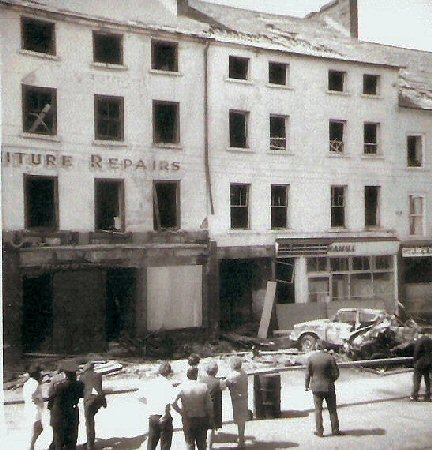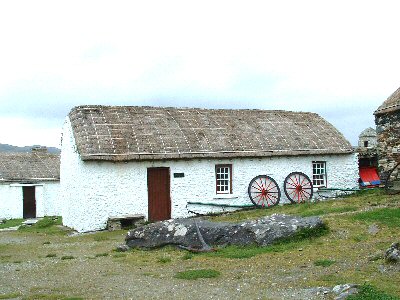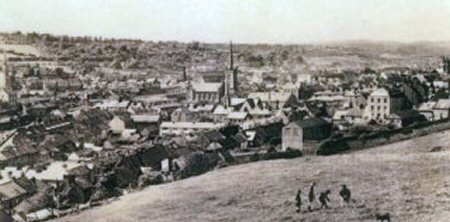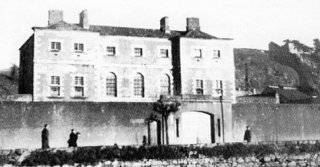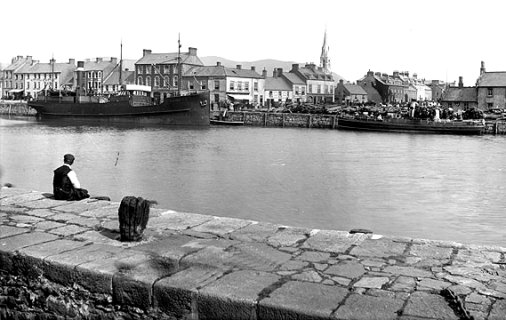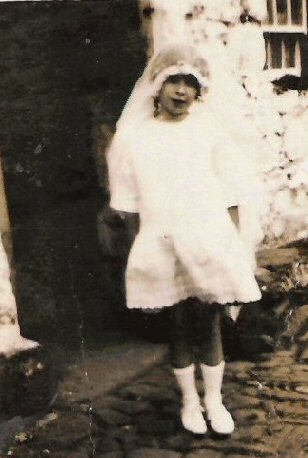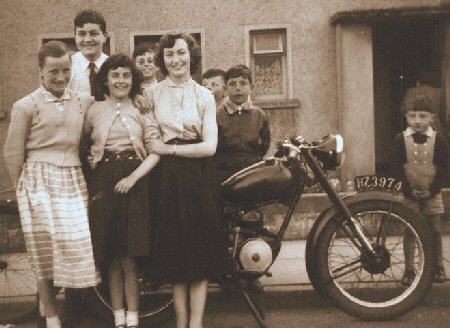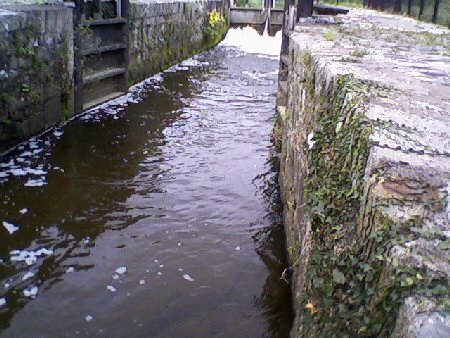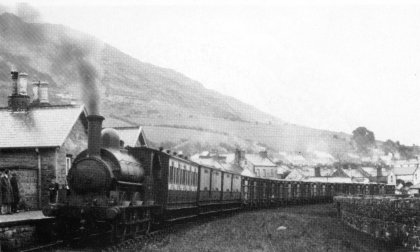The next day I set out once more with my camera to record what had happened to
Places
Cross Blacksmiths
There were few tractors in the 1940s and early 1950s and horses did most of the work. There were many blacksmiths in the area; at Creggan, a mile down the road, Jack McKeown at Sheetrim, Cullyhanna, in Crossmaglen on the
I was fascinated by the smiths and by the sounds and smells of the forges (smithies); the dark interior, the dull glowing fire on a plinth which flared to white hot when powered by a large long handled bellows, the sweating muscular blacksmith creating a horseshoe from a bar of metal by repeated heating and hammering on the anvil, the sparks from the fire and from the metal being hammered flying up and fading, the red light of the fading fire reflecting from the sooty sweat on the smith’s arms and face.
Each smith had his own rhythm on the anvil, a pattern of allowing the hammer to bounce on the metal before smiting the iron being shaped. The rhythm would repeat until the metal was too cool to shape – at which point it was returned to the fire and the bellows applied until it was again glowing red. At various points the hot shoe would be applied to the horse’s hoof, to check for size and to provide a snug fit for the final product. The smoke from this and the acrid smell of burning hoof filled the smithy.
I was constantly
… more later …
Paddy McGourgan’s Field
When I was about five years old in the late 1940’s I first stepped into the field, over the broken wall at the yard at our house in Maginness Street with the help of a ladder my father had bought from a man at his work.
Bridewell Detainees
Seemingly it was normal practice to detain temporarily in The Bridewell, all those in breach of army regulations, and deserters.
Then they were conveyed to more permanent and secure places of confinement.
Day trip to Warrenpoint
[The following story is uploaded now in response to yesterday’s request from my friend Peter Hughes, Warrenpoint Librarian! – Editor)
Years ago during the summer seasons Newry parents had various ways of treating their family. A particular favourite, usually on Sundays, was a ‘day trip’ to Warrenpoint.
Brown’s Yard 3
As you enter Brown’s Yard from High Street the first cottage of the row of four is the home of a man called Mr M Teggart. I don’t have a lot of information on this man except that he had the ability …
Derrybeg : 5
On another occasion I came upon a group of British soldiers busy digging in my back garden. I identified myself and enquired of a sergeant whether they had received intelligence that something was buried there – arms and explosives or whatever.
Towpath: Hickey’s Lane
Directly behind Fearon’s cottage was St Coleman’s College with its extensive grounds and football field. This was the place of many a pitched battle between ourselves and the college boys, who objected to our rite of passage across their field.
John Haugh’s Carlingford 1
You may not be familiar with the man, but you are well-versed in his work! You see, John Haugh of Carlingford is the sculptor of most eminent religious statues about the town, especially the Christmas Crib figures. These are his reminiscences.
